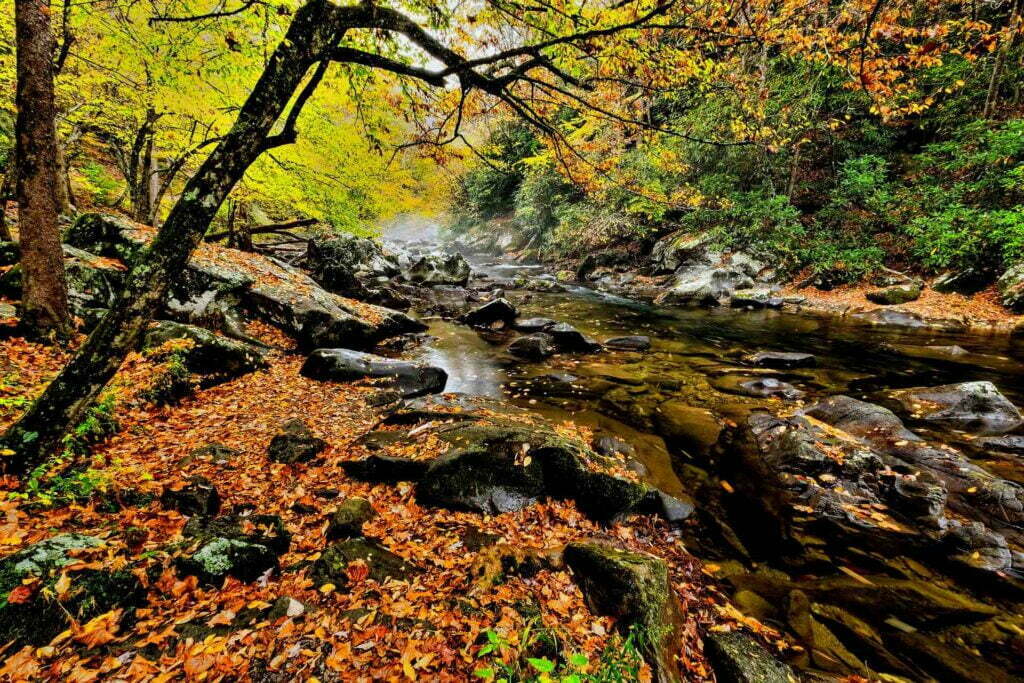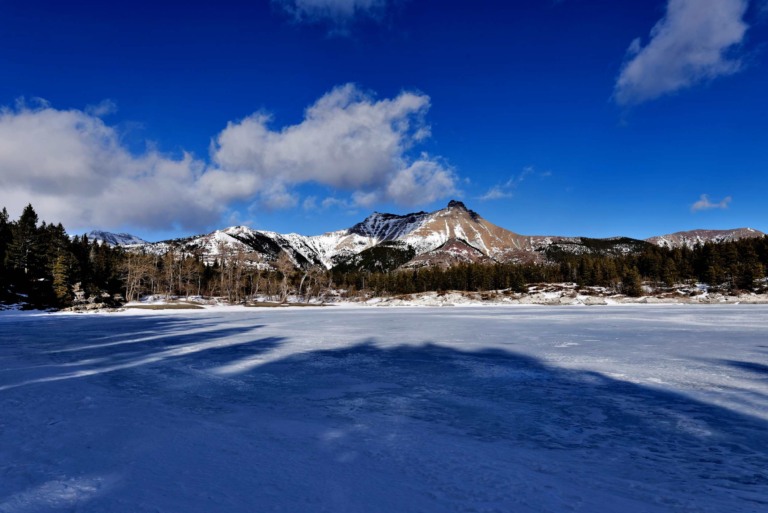The Great Smoky Mountains, or Smoky Mountains or Tennessee Mountains, a western segment of the high Appalachian Mountains in eastern Tennessee and western North Carolina, U.S., were a UNESCO World Heritage Site from 1983 onwards.
Great Smoky Mountains National Park Facts
Great smoky mountains run between Knoxville, in western Tennessee, and Asheville, in eastern North Carolina. These mountains are sometimes considered a division of the Unaka Mountains since they fade into the Blue Ridge escarpment to the east in North Carolina.
Clingmans Dome, at 6,643 feet (2,025 meters), is the highest point within the Smoky Mountains National Park. It is Tennessee’s highest point. Mounts Guyot, Chapman, Collins, Le Conte, and Kephart are all over 6,000 feet (1,830 metres) in elevation.
The national park is part of a prominent resort area formed by the mountains. The Appalachian National Scenic Trail runs through it. The Blue Ridge Parkway’s southern terminus and the tourist town of Gatlinburg, Tennessee.
Smoky Mountain Weather
A trans-mountain roadway passes through Newfound Gap, which is 5,046 feet (1538 meters) above sea level. The Great Smokies are covered in woods, with around 40% of them being virgin growth, and they support a diverse range of plant and animal species.
Hundreds of streams and waterfalls are fed by a lot of rain. The mountains encompass the Cherokee Indian Reservation as well as parts of the Pisgah, Nantahala, and Cherokee national forests, which were once the realm of the Cherokee Indians.
Tennessee Smoky Mountains
The Tennessee Smoky Mountains were discovered in the mid-nineteenth century by Thomas L. Clingman, a U.S. representative and senator from North Carolina, and geographer Arnold Guyot, and named for the region’s bluish haze.
In the late 18th century, farmers began to settle in the valleys. During the first quarter of the twentieth century, the mountains were intensively logged.
The Great Smoky Mountains National Park’s highest peak is Clingmans Dome. It’s about 35 miles (56 kilometers) southeast of Knoxville, Tennessee, near the Tennessee–North Carolina border. This is Tennessee’s highest point.
It is also the highest point along the Appalachian National Scenic Trail, rising to a height of 6,643 feet (2,025 meters). An observation tower, standing 54 feet (16 meters) tall at the peak, provides an unrestricted view of the Great Smoky Mountains. The summit was named for Thomas L. Clingman, a North Carolina politician.
Great Smoky Mountains History Facts
The Great Smoky Mountains are among the world’s oldest mountains. Their diverse ecosystem is a holdover from the previous Ice Age. When glaciers came to a halt just short of the Great Smoky Mountains, they left behind a trove of living organisms that would diversify for thousands of years.
Since prehistoric times, humans have lived in these mountains, adapting to variations in climate and environmental conditions. Over 12,000 years ago, hunters and gatherers moved through this area.
During the Woodland Period, which lasted between 3,000 and 1,000 years, more permanent villages arose. When European-American immigrants came to the area in the 1700s, they discovered themselves in the midst of one of the continent’s most culturally evolved tribes, the Cherokee.
The history of the smoky mountains is contained within the Cherokee homeland. During more than 1,000 years of settlement, the Cherokee people cultivated complex agricultural, government, and trading systems. They knew everything there was to know about this area, its vegetation, and its animals.
The Cherokee had acquired new agricultural and architectural methods from white settlers by the 1830s, as well as developed a written language system. Despite this, they were forced to flee their homeland in what became known as the “Trail of Tears,” one of the most sad incidents in our country’s history.
The Cherokee living on the reservation near the park now are descended from the handful who stayed or managed to return. In the late 1700s, white settlers flocked to the Smokies in search of a better life, battling forest farms, homes, and towns.
They erected log homes and lived off the land, farming, hunting, and pastured cattle, and taking advantage of the forest’s abundant resources. Churches were the social hubs of their towns.
Schools could be found in towns all throughout the highlands since education was highly prized. Though their early years in this untamed terrain were rudimentary, mountain people and their contemporaries living in rural areas outside the mountains had little in common by the 1900s.









